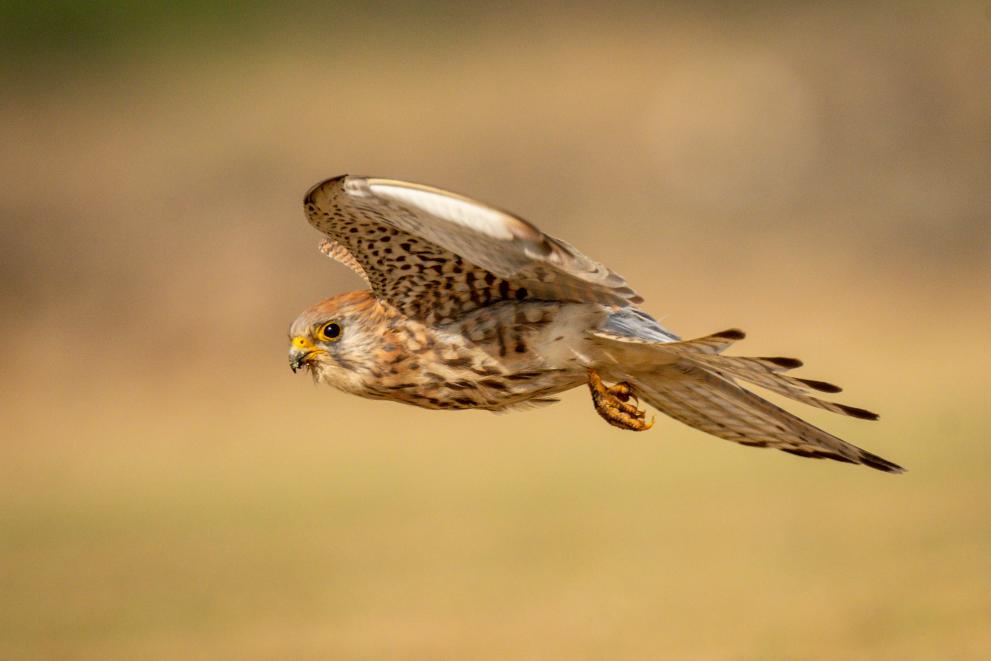
Modern intensive husbandry (livestock production for meat and milk) is threatening biodiversity in agricultural ecosystems, and has become a leading cause of critical environmental issues and biodiversity loss worldwide. In the EU, livestock production is responsible for 78% of the total terrestrial biodiversity loss caused by European agriculture. Factors such as overgrazing, nitrification, eutrophication, greenhouse gas emissions, the spread of diseases and alien species, and conversion of natural and semi-natural ecosystems for livestock production capable of meeting rising demand are behind this decline.
Birds are excellent indicators of the health and sustainability of natural environments. They are also practical indicators, in that they are typically easy to find, count and identify, and are sensitive to changes in land use and climate1. However, many common farmland bird species are disappearing rapidly: according to the PanEuropean Common Bird Monitoring Scheme, which the European Commission has supported since 2006, the number of common farmland bird species in the EU declined by 52% from 1980 to 2021.
This new study assesses the determinants and drivers of the species richness of breeding birds in an intensive agricultural ecosystem in northern Italy. The south-eastern Po floodplain is a landscape dominated by hay crops, which are largely dedicated to producing Parmigiano Reggiano cheese (a Protected Designation of Origin product), and is one of the most intensively cultivated and densely inhabited regions of Europe.
The researchers explored species richness in the avian community and analysed its association with various landscape, agricultural and soil-related variables2. They then focused on a raptor species – the lesser kestrel (Falco naumanni) – to assess whether this species could be used as a reliable proxy for the richness of breeding avian communities in such ecosystems. This would mean that tracking the lesser kestrel as a flagship species could help guide effective conservation initiatives in the region, they suggest.
The three types of species richness the researchers explored were affected by different variables, suggesting that implementing effective conservation actions may be challenging without tailoring these by scale and species. They found that on smaller spatial scales, overall breeding-bird species richness was enhanced by semi-natural and marginal habitats, a moderate cover of built-up areas, and landscape heterogeneity.
Focusing on agricultural ecosystems, the researchers found that farmland species richness was also enhanced by landscape heterogeneity, although ground-nesting species richness was not affected. Ground-nesting species were negatively impacted by urbanisation-driven fragmentation, and enhanced by the prevalence of clay soil. All were maximised by an intermediate cover of three prevailing crops (winter, summer, hay), and increased where these co-occurred (i.e. in areas practising crop rotation). This suggests that no single crop type is more beneficial to birds as such, but that the presence of different crops and their rotation increase their diversity.
The occurrence of the lesser kestrel was greater where farmland and ground-nesting species richness was high, which the researchers argued was likely to be because these species have similar ecological requirements, but it did not correlate with the overall species richness of the breeding bird population in the area. Actions to protect the lesser kestrel are, therefore, likely to benefit farmland and ground-nesting birds of conservation interest (ground-nesters in particular) that occur in the same ecological areas. This positions the lesser kestrel as an ideal flagship species for conservation initiatives tailored to the production of biodiversity-friendly food products in intensive agricultural ecosystems3.
While traditional agriculture has supported farmland biodiversity for millennia, the researchers argue that it is economically and socially impractical to return to such practices on a large scale as our planet’s population rises. The researchers also offer a word of caution regarding the generalisation of their model, suggesting that the specific agricultural features of study areas in different contexts will require further study.
Footnotes
1. Source: PanEuropean Common Bird Monitoring Scheme. Available from: https://pecbms.info/about-us/ [accessed 11/5/23].
2. Their results warn that the ecological requirements of specialists may be masked by those of less specialised birds when analysing entire communities, challenging conservation initiatives. For example, heterogeneous landscapes containing more semi-natural and marginal (hedgerows, trees) elements are known to support overall biodiversity, a finding that was also true for this study – but the researchers also found that these variables had no impact on ground-nesting bird species more specifically.
3. The researchers propose that market-based conservation models – those that assume consumers will pay more for a product if it has a positive environmental impact or is superior in health or quality ('added value’ characteristics) – offer the opportunity to preserve biodiversity in agricultural ecosystems without sacrificing food security. High-quality protected products, such as Parmigiano Reggiano, which can only be produced in a specific region, are ideal candidates to promote market-based initiatives, they suggest, due to their specialist mode of production and emphasis on quality.
Source:
Assandri, G., Bazzi, G., Siddi, L., Nardelli, R., Cecere, J. G., Rubolini, D., and Morganti, M. (2023) The occurrence of a flagship raptor species in intensive agroecosystems is associated with more diverse farmland bird communities: Opportunities for market-based conservation, Agriculture, Ecosystems and Environment, 349: 108441.
To cite this article/service:
“Science for Environment Policy”: European Commission DG Environment News Alert Service, edited by the Science Communication Unit, The University of the West of England, Bristol.
Notes on content:
The contents and views included in Science for Environment Policy are based on independent, peer reviewed research and do not necessarily reflect the position of the European Commission. Please note that this article is a summary of only one study. Other studies may come to other conclusions.
Details
- Publication date
- 27 July 2023
- Author
- Directorate-General for Environment

